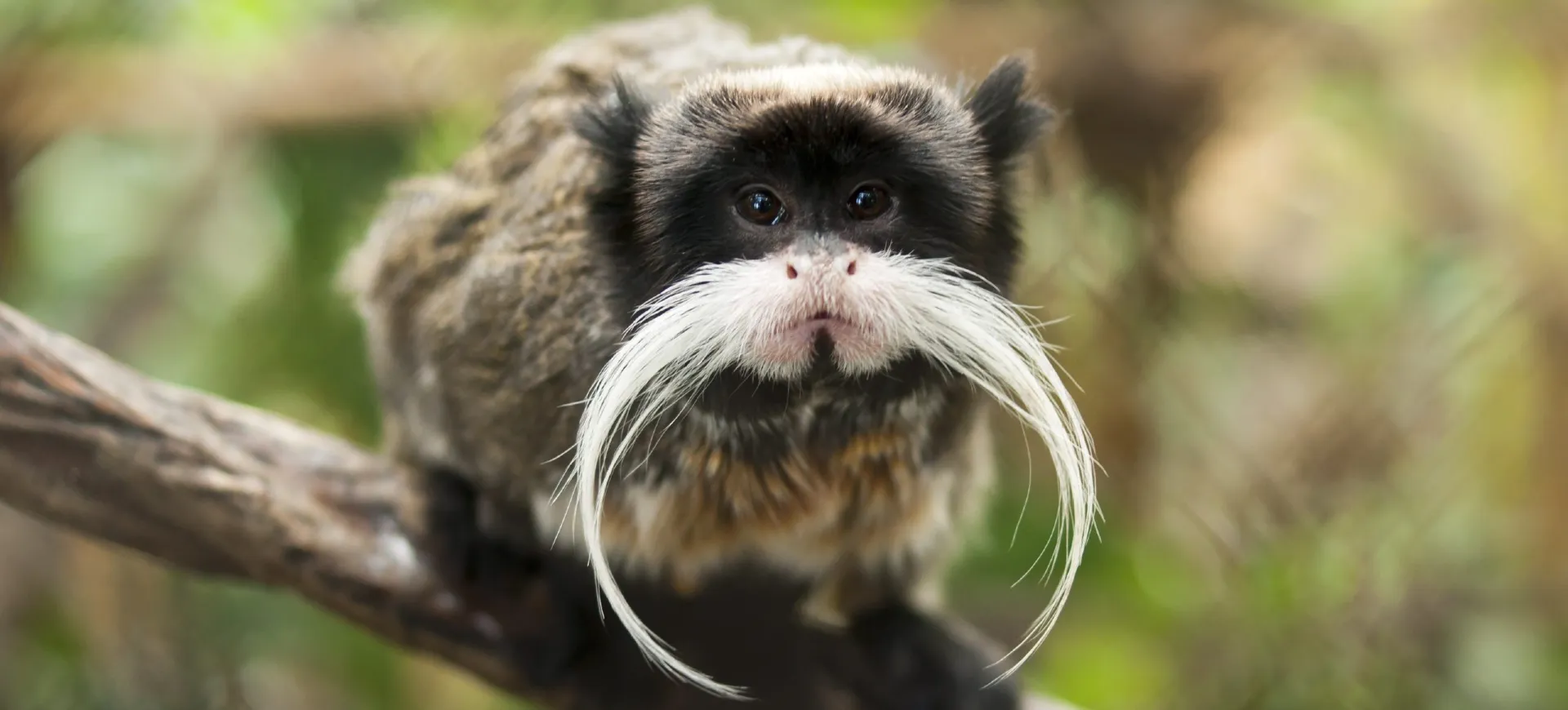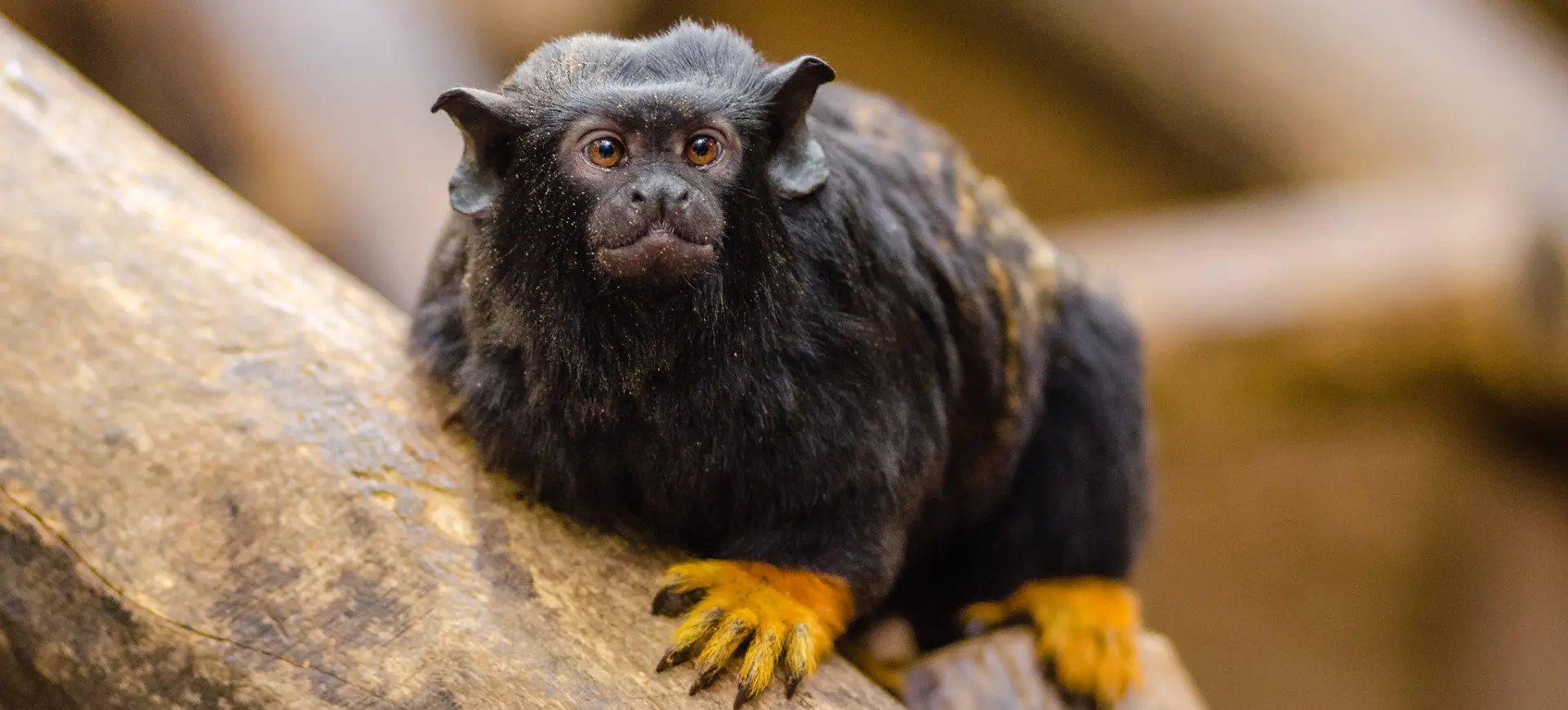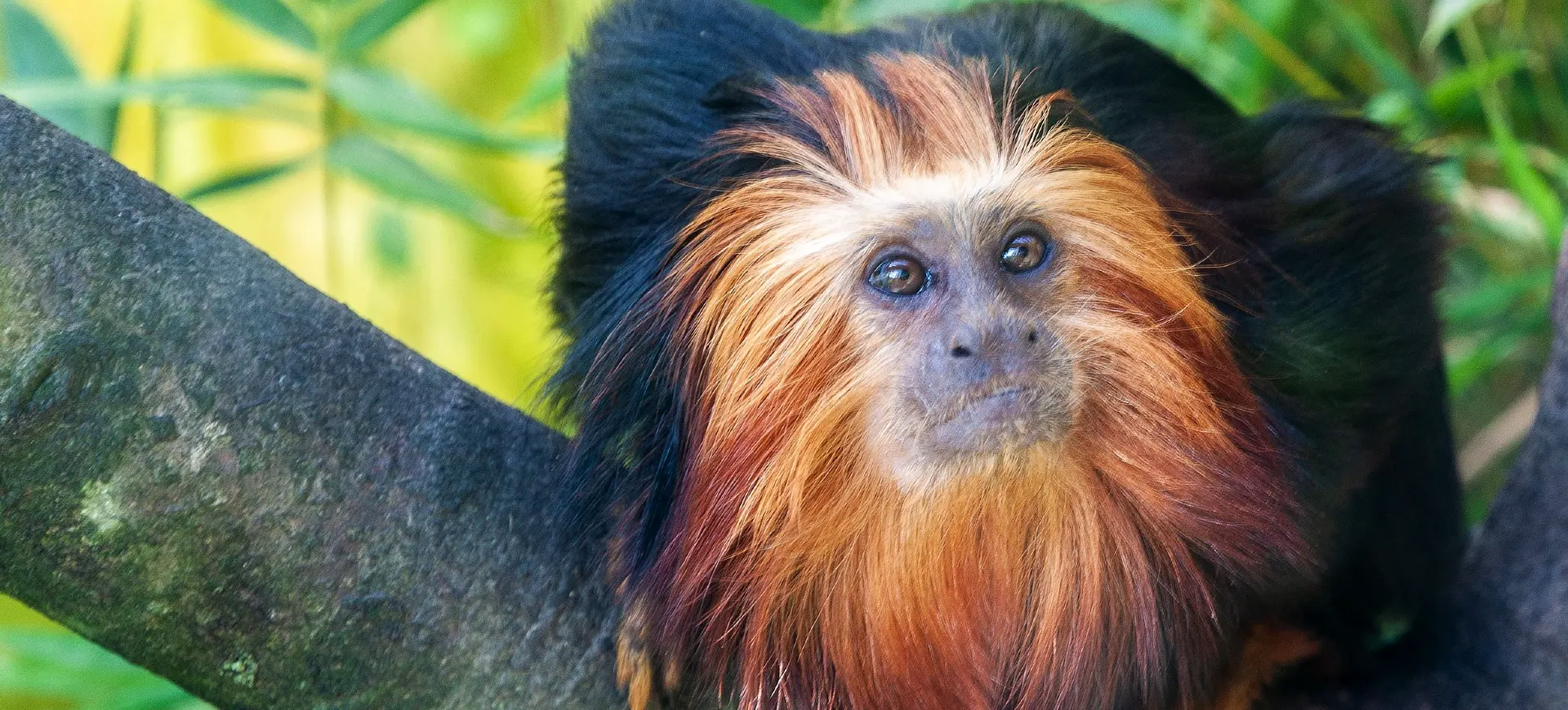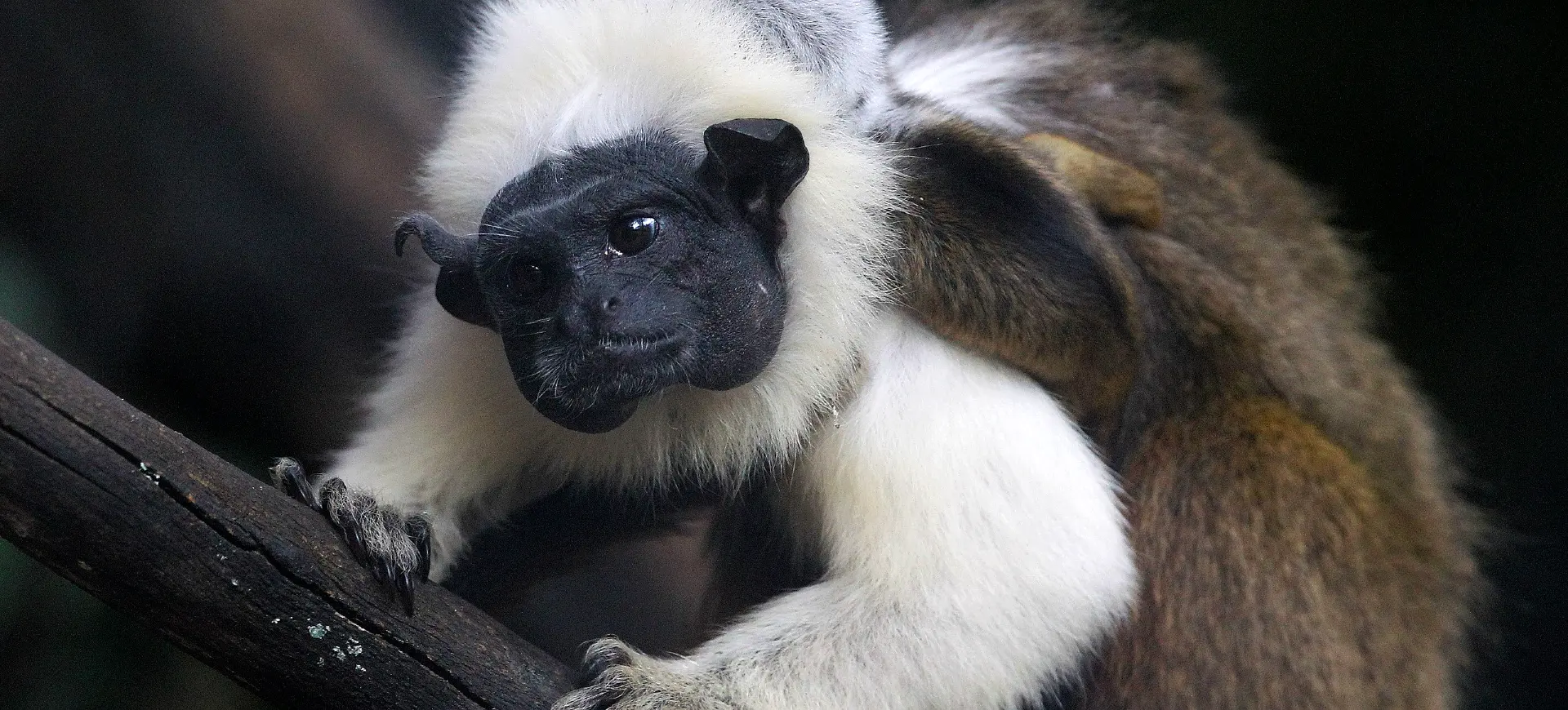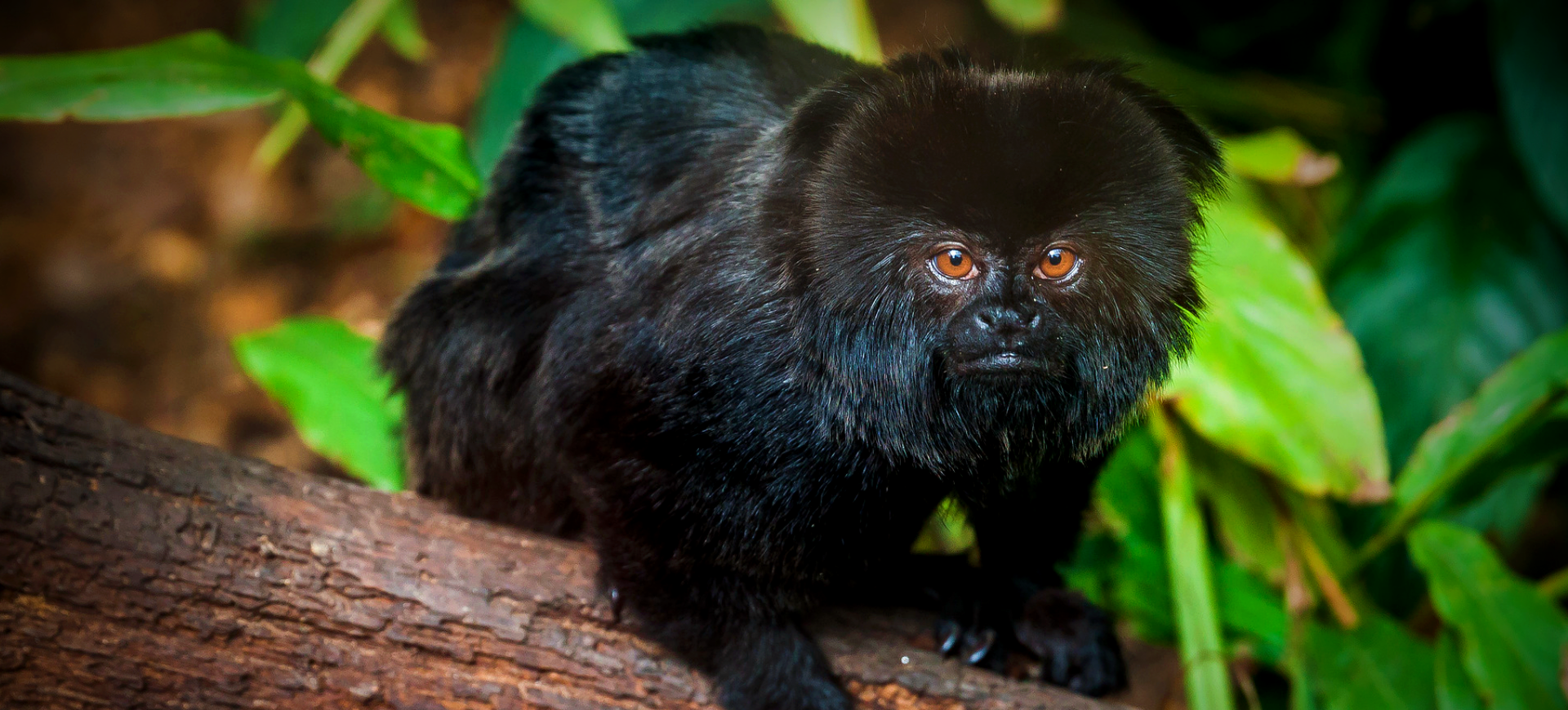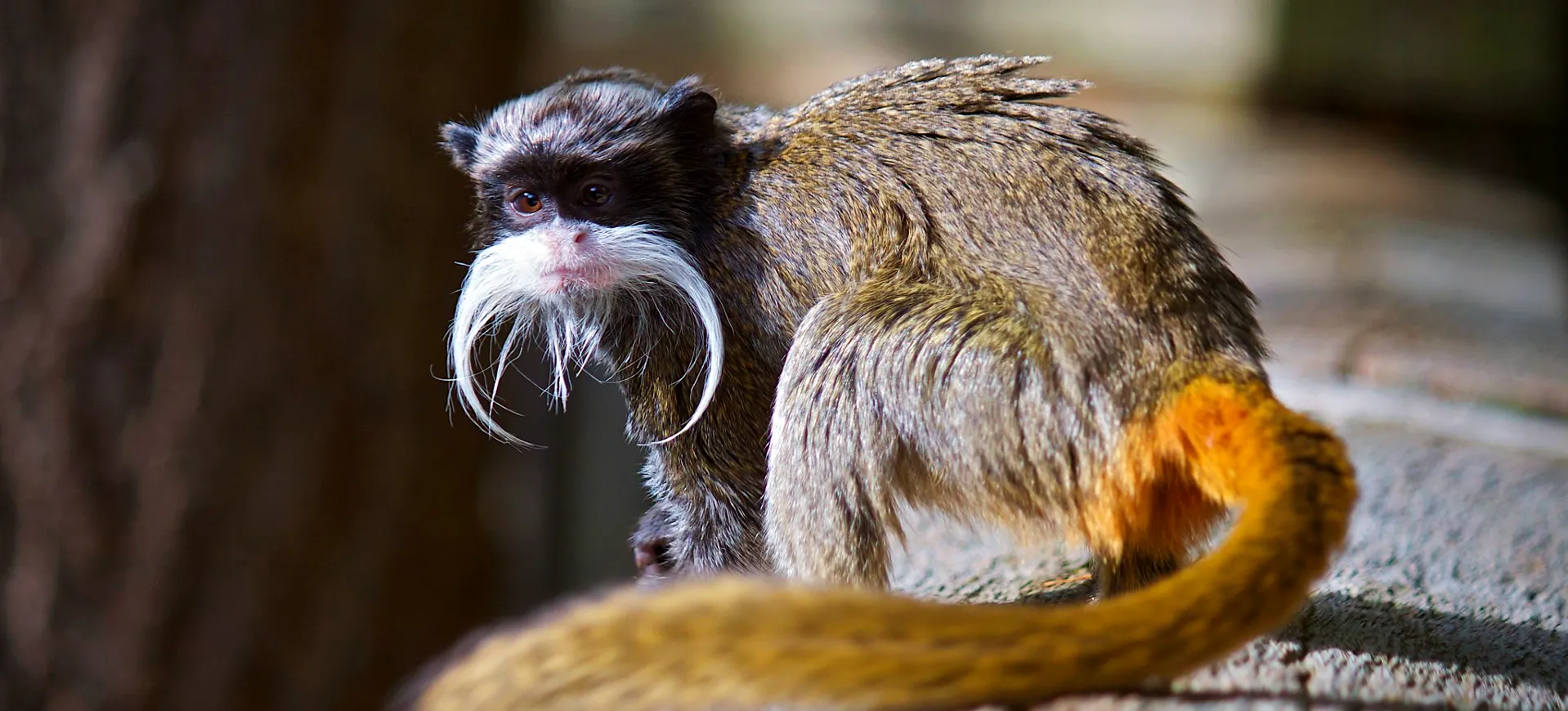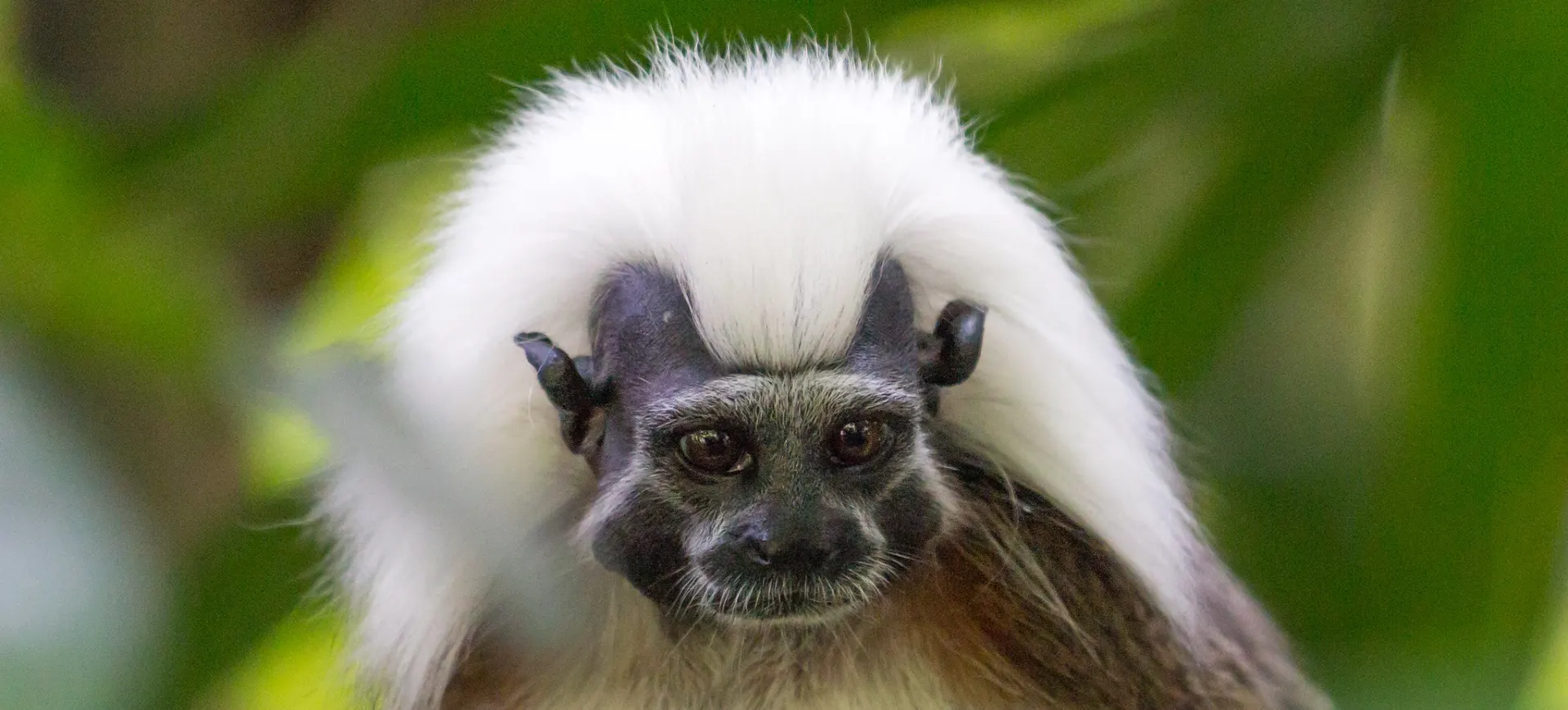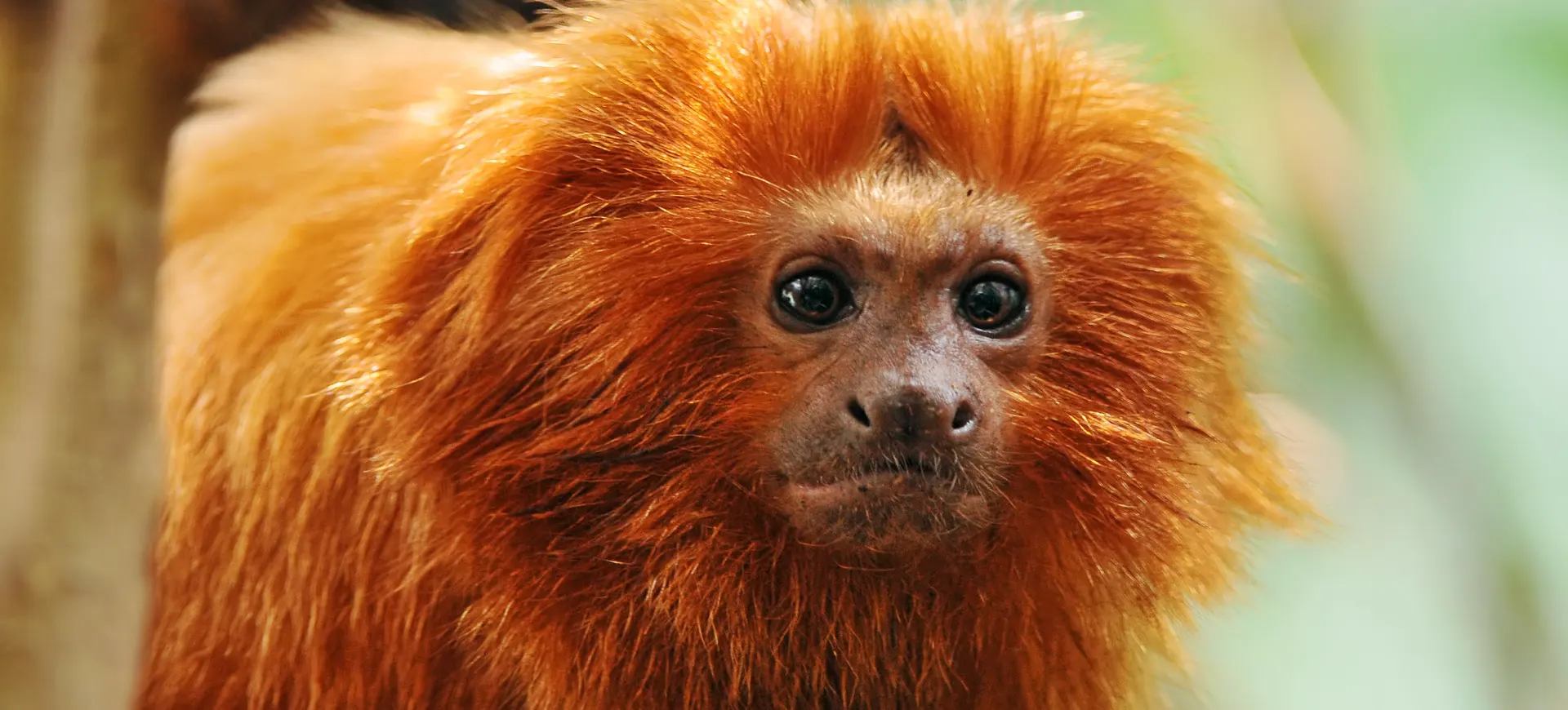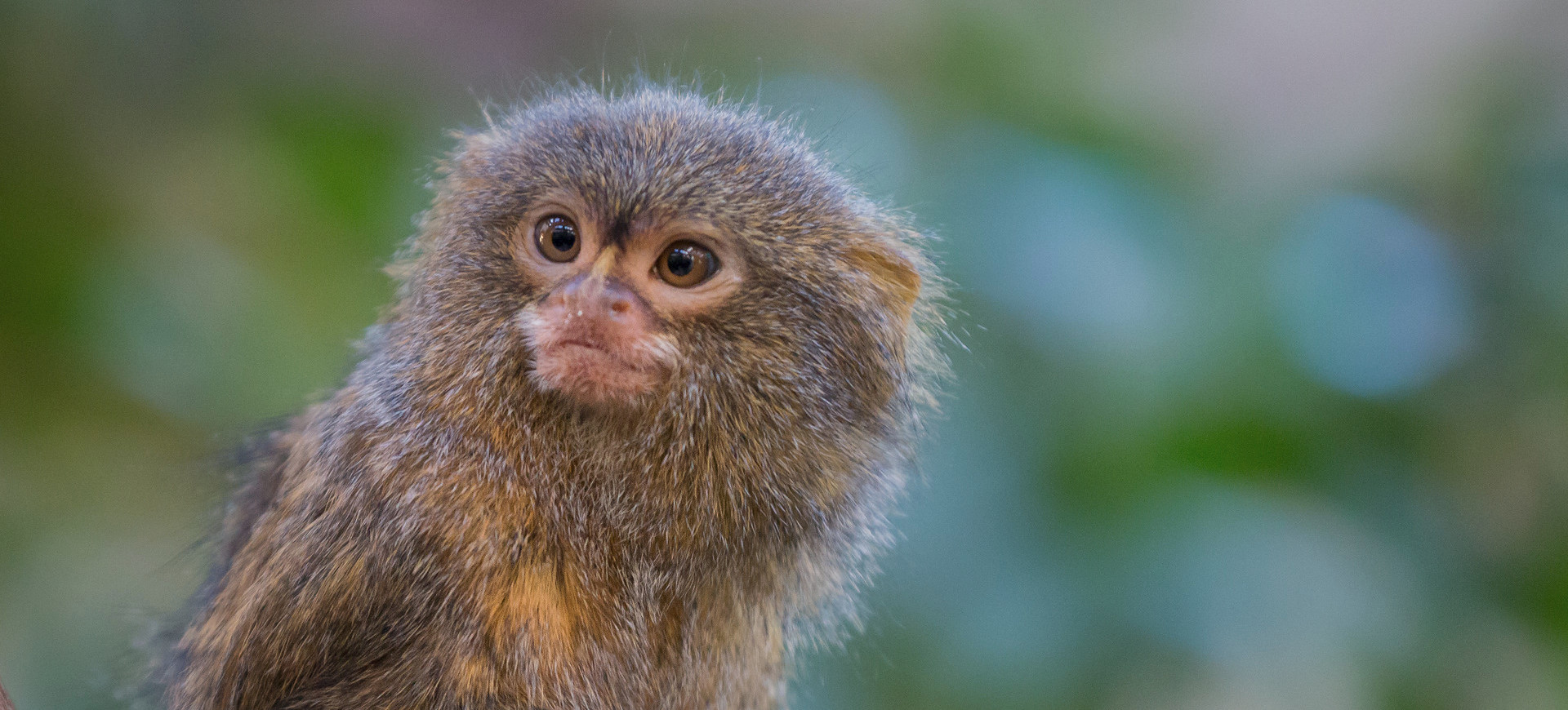Overview
The White-headed Marmoset, also known as the Tufted-ear Marmoset or White-headed Tamarin, is a small primate native to Brazil. It is distinguished by its striking white hair surrounding its face and ears, contrasting sharply with its black or dark brown body fur. These marmosets are arboreal and diurnal, spending most of their time in the trees of their native tropical forests. They are highly social animals living in groups that communicate with complex vocalizations, body language, and facial expressions.
White-headed Marmosets have a specialized diet consisting primarily of tree gum, fruits, insects, and small animals. Their adaptation to a gum-feeding lifestyle includes sharp lower incisors that allow them to gouge tree bark. These primates play a crucial role in their ecosystem, acting as pollinators and seed dispersers for many tree and plant species. Their small size and specialized diet make them vulnerable to habitat destruction and climate change, highlighting the importance of conservation efforts.
Despite their small size, White-headed Marmosets exhibit remarkable social complexity and environmental adaptation. They can adjust their feeding habits based on the availability of resources, showing flexibility in their diet. This adaptability extends to their breeding habits, with the species capable of breeding throughout the year, depending on environmental conditions. Conservation efforts for these marmosets focus on habitat preservation and establishing protected areas to ensure survival amidst ongoing deforestation and habitat fragmentation.
Taxonomy
Kingdom
Phylum
Class
Order
Family
Genus
Species
Type
Physical Description:
The White-headed Marmoset is a diminutive and agile primate characterized by its distinctive white facial and ear hair. Its body is predominantly covered in black or dark brown fur, with a notable presence of white tufts at the ears, adding to its unique appearance. Adults typically have a body length ranging from 7.5 to 9.4 inches, with a tail longer than their body, aiding in balance during arboreal navigation. Their hands and feet are specialized for gripping, allowing them to easily cling to vertical tree trunks and branches.
These marmosets are known for their expressive faces and large, dark eyes that provide excellent vision, a critical adaptation for their daily lifestyle. Their physical adaptations, including a specialized dental structure for gouging tree bark to access gum, underscore their ecological niche. The White-headed Marmoset’s compact size and agile movements allow it to forage and navigate the forest canopy efficiently. Despite their small stature, they exhibit strong territorial behavior, defending their home range from intruders.

Lifespan: Wild: ~10 Years || Captivity: ~16 Years

Weight: Male: 0.62-0.68 lbs (280-310 g) || Female: 0.57-0.63 lbs (260-285 g)

Length: Male & Female: 7.5-9.4 in (19-24 cm)

Top Speed: 24 mph (38.6 km/h)
Characteristic:
Native Habitat:
The White-headed Marmoset is native to the Atlantic Forest of eastern Brazil, inhabiting a range of forest types within this region, including primary and secondary forests, as well as plantations and forest edges. This habitat is characterized by high biodiversity and a complex structure, offering a rich environment for these marmosets to thrive. The arboreal lifestyle of the White-headed Marmoset is supported by the dense canopy and abundant tree species that provide both food and shelter. Their preference for gum-producing trees dictates their distribution within the forest, often leading them to areas with a high concentration of such trees.
The adaptability of the White-headed Marmoset to various forest conditions demonstrates their resilience and capability to survive in changing environments. However, their dependence on specific tree species for gum makes them vulnerable to deforestation and habitat degradation. Efforts to conserve their habitat are crucial for survival, highlighting the importance of protecting the Atlantic Forest biome. The intricate relationship between these marmosets and their native habitat underscores the interconnectedness of species and ecosystems, emphasizing the need for comprehensive conservation strategies.
Climate Zones:
Biomes:
Biogeographical Realms:
Continents:
Countries:
Diet:
Diet & Feeding Habits:
White-headed Marmosets have a highly specialized diet, primarily consisting of tree gums, resins, and saps, which they access by gouging tree barks with their sharp teeth. This dietary preference requires a specific habitat rich in gum-producing trees, highlighting their ecological niche. Besides gum, they also consume fruits, flowers, nectar, insects, and small vertebrates, showcasing their opportunistic feeding behavior. The foraging technique of these marmosets is a crucial aspect of their daily activities, requiring them to traverse large forest areas in search of food.
The dietary habits of the White-headed Marmoset play a significant role in the dispersion of seeds and pollination of various plant species, contributing to the biodiversity of their ecosystem. Their ability to adapt their diet based on seasonal variations and the availability of food sources is a testament to their survival skills. Group foraging is common, with individuals sharing information about food locations, reinforcing social bonds and group cohesion. The specialized diet of the White-headed Marmoset underscores the importance of preserving their natural habitats to ensure the availability of their food sources.
Mating Behavior:
Mating Description:
White-headed Marmosets have a polygamous mating system, where the dominant male mates with multiple females within the group. Breeding can occur throughout the year, with no specific breeding season, although environmental factors such as food availability can influence reproductive timing. Gestation lasts approximately 144 days, resulting in the birth of twins, which is common among marmosets. The entire group cares for the young, with males and older siblings assisting in carrying and feeding the infants.
This cooperative breeding system enhances the survival rate of offspring and distributes the energy cost of rearing young across the group. Such social support allows the breeding female to recover more quickly and increases the likelihood of subsequent successful pregnancies. This system also provides valuable learning opportunities for juveniles and subadults, preparing them for future parental roles. The social structure of White-headed Marmosets, centered around family groups, plays a crucial role in their reproductive strategy and the maintenance of their populations.
Reproduction Season:
Birth Type:
Pregnancy Duration:
Female Name:
Male Name:
Baby Name:
Social Structure Description:
The social structure of the White-headed Marmoset is characterized by small, family-based groups, typically consisting of a dominant breeding pair and their offspring. These groups are highly cohesive, with strong bonds maintained through grooming, playing, and cooperative care of the young. The group’s hierarchy is established, with the dominant male and female leading in foraging and defense activities. Communication among group members is complex, involving a variety of vocal, visual, and olfactory signals to coordinate activities and maintain social bonds.
Territorial behavior is observed in White-headed Marmosets, with groups defending their home ranges against intruders. Territorial disputes are usually resolved through vocal displays and posturing, avoiding physical confrontation. The maintenance of territories ensures access to food resources and nesting sites, which are critical for the survival and reproduction of the group. White-headed Marmosets’ social structure and behaviors play a crucial role in their adaptation to the forest environment, supporting their feeding, breeding, and defensive strategies.
Groups:
Conservation Status:
Population Trend:
The White-headed Marmoset population in the wild is considered stable in areas where their habitat is intact and protected. However, in regions experiencing deforestation and habitat fragmentation, populations have declined. The adaptability of this species to secondary forests has helped mitigate some of the negative impacts of habitat loss, but the long-term viability of these populations remains uncertain. Conservation areas and protected habitats are crucial for maintaining stable populations, as they provide refuge from the threats posed by human activities.
Efforts to monitor White-headed Marmoset populations are essential for understanding their distribution and density across their range. Research and field studies contribute to the development of effective conservation strategies aiming to address the challenges of habitat loss and fragmentation. The establishment of wildlife corridors and reforestation projects are among the initiatives designed to support the connectivity of populations and the expansion of their habitat, ensuring the species’ future survival.
Population Threats:
The primary threats to the White-headed Marmoset include habitat destruction and fragmentation, driven by deforestation for agriculture, urban development, and logging. These activities reduce the availability of their natural habitats, limiting access to essential resources such as food and nesting sites. The illegal pet trade also poses a significant threat, with individuals being captured and sold, leading to population declines and disruptions in social structures.
Climate change represents an emerging threat with potential impacts on the ecosystems of the Atlantic Forest. Changes in temperature and precipitation patterns could affect the availability of food resources and suitable habitats, challenging the species’ adaptability. Conservation efforts must address these threats through habitat protection, legal enforcement against wildlife trafficking, and climate change mitigation strategies to ensure the long-term survival of the White-headed Marmoset.
Conservation Efforts:
Conservation efforts for the White-headed Marmoset focus on habitat preservation and establishing protected areas within the Atlantic Forest. Legal protection at national and international levels aims to prevent habitat destruction and combat the illegal pet trade. Reforestation projects and creating ecological corridors are critical for connecting fragmented populations and expanding their habitat.
Education and awareness campaigns play a vital role in conservation, informing the public about the importance of the White-headed Marmoset and the threats it faces. Community involvement in conservation projects and sustainable land-use practices can contribute to the protection of their habitat. Research and monitoring are essential for assessing the effectiveness of conservation strategies and guiding future efforts to ensure the species’ survival.
Additional Resources:
Fun Facts
- White-headed Marmosets have specialized lower incisors adapted for gouging tree bark to access sap.
- They can leap up to 16 feet (5 meters) between trees, showcasing their remarkable agility.
- This species is one of the few primates where twins are the norm rather than the exception.
- Their vocal repertoire includes a variety of sounds used for communication, such as trills, whistles, and screams.
- White-headed Marmosets have a mutualistic relationship with certain tree species, pollinating flowers while feeding on nectar.
- They have a unique claw-like structure on their fingers, except for the opposable thumb, aiding in gripping tree bark.
- The species exhibits a high degree of parental care, with both males and females participating in the rearing of offspring.
- White-headed Marmosets use scent marking to communicate territory boundaries and social status within the group.
- They can remarkably adapt to environmental changes, including habitat degradation.
- Conservation programs involving White-headed Marmosets focus on habitat restoration and creating biological corridors to connect fragmented populations.






